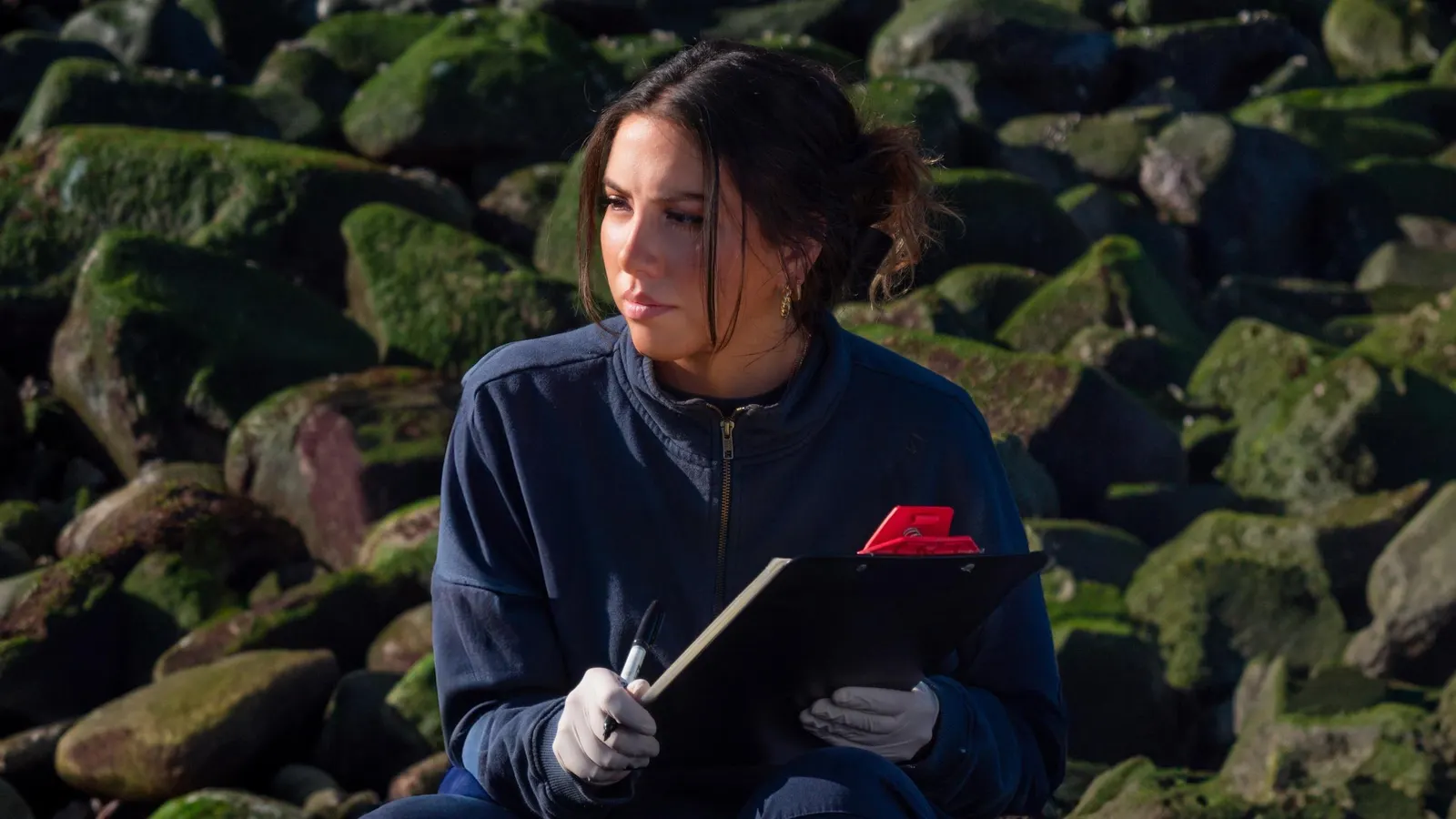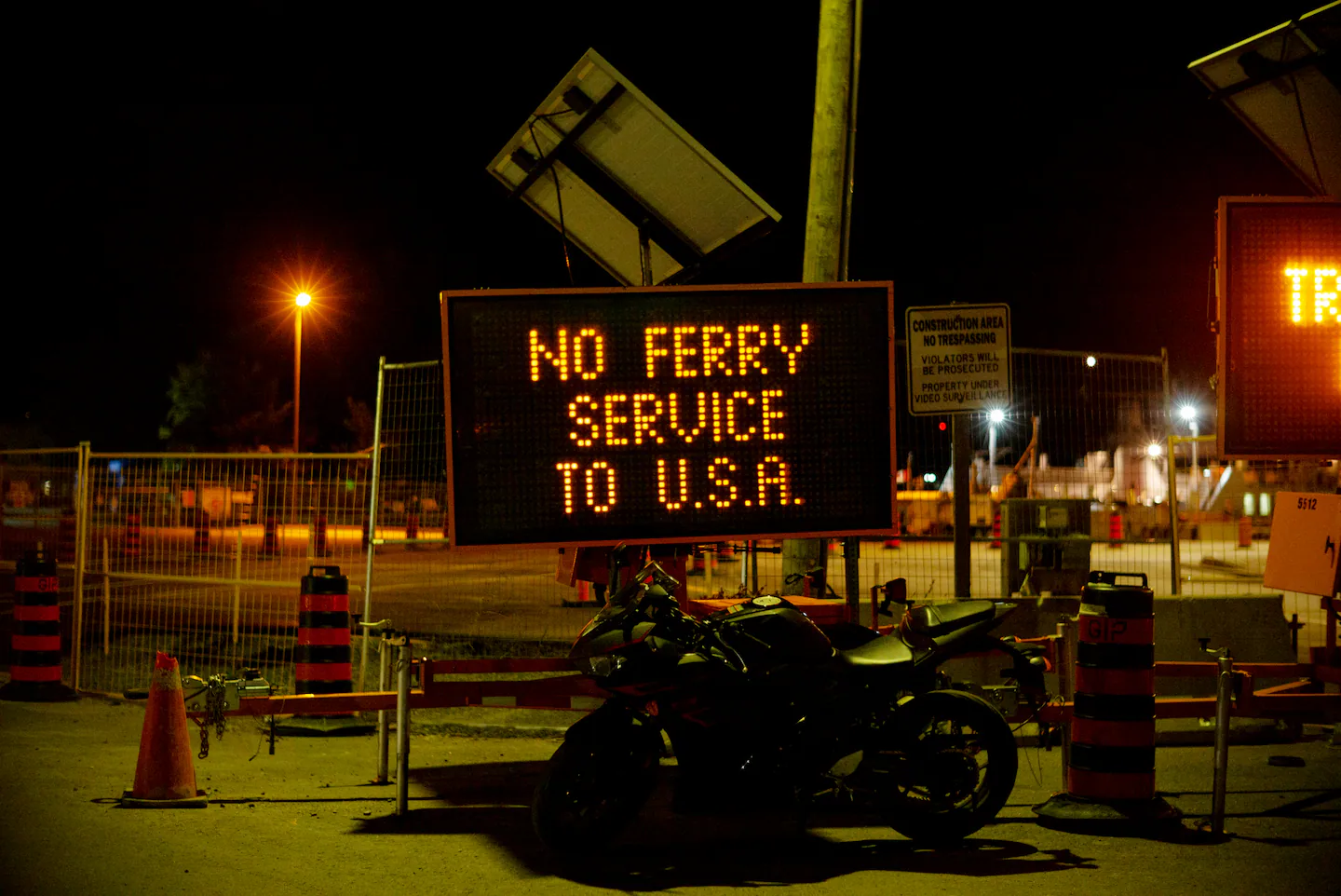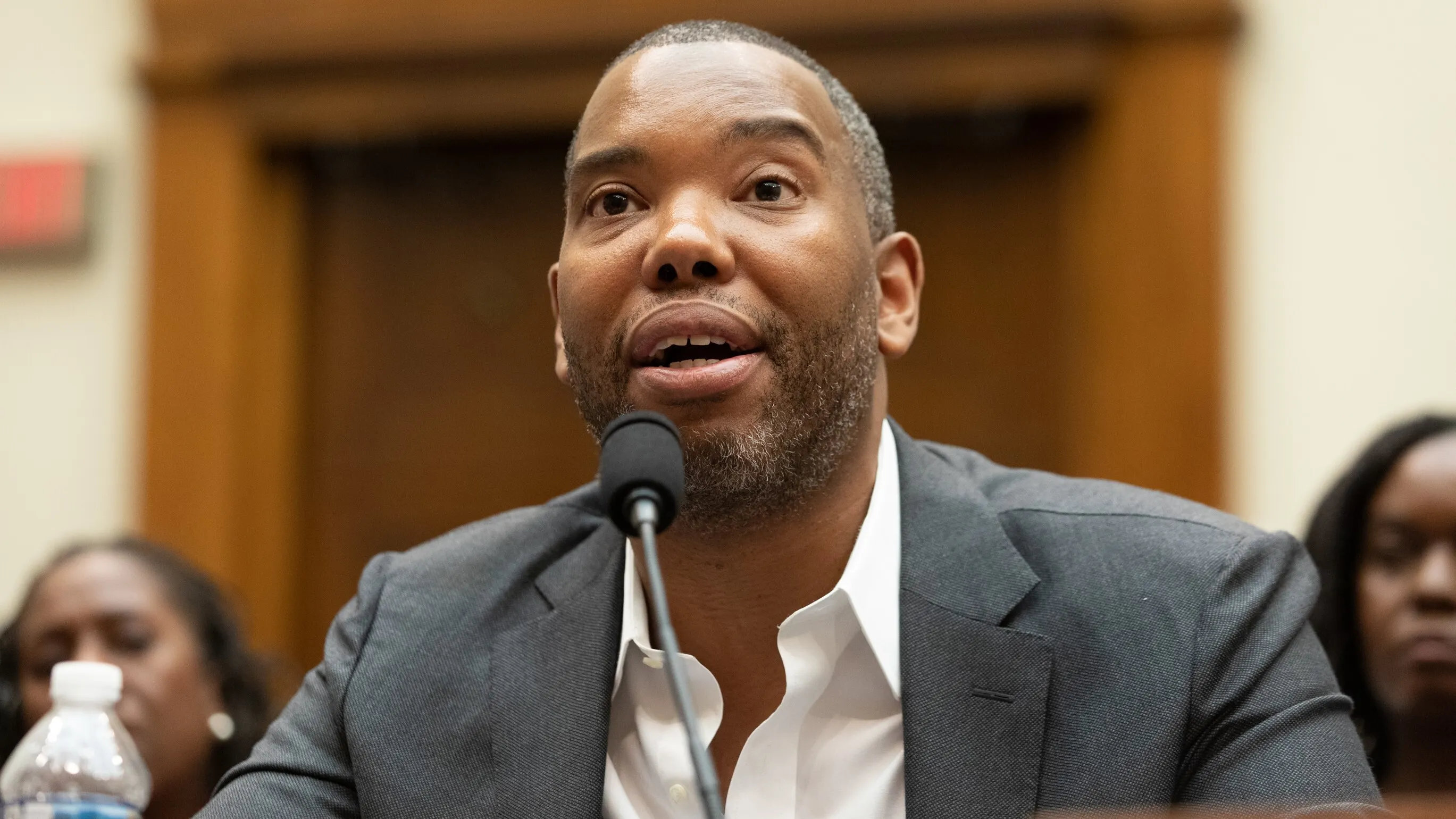By Contributor,Heidy Martinez,Melissa Cristina Márquez
Copyright forbes

Heidy looking at data while overlooking out into the ocean.
Provided by Heidy Martinez and SSCS
In the northernmost waters of the Gulf of California, a ghost drifts through the waves. Seldom seen, almost myth-like, the vaquita is the rarest porpoise in the world… and perhaps the most endangered. Fewer than two dozen remain. To some, it feels like watching a spirit fade, a species slipping into legend before our very eyes.
And yet, the fight continues.
Night after night, monitoring vessels scour the darkness, scanning for illegal nets that ensnare the last of these elusive creatures. It is lonely, exhausting work, haunted by the knowledge that the odds are impossibly slim. But for those who refuse to give up, the struggle is not just about saving a species balanced on the edge of extinction. It is about what the vaquita represents: a warning, and a message from the deep.
Because sharks could be next.
Marine biologist Heidy Martinez carries this knowledge on her shoulders, the rhythm of her life is written by the tides — two months at sea protecting the last vaquitas, followed by two months darting across the globe to join various shark research projects. Between rotations, she grants herself only a handful of days (sometimes just one!) before boarding another vessel, diving into another field site, another fight for the ocean. Her story began in a single, transformative moment. Growing up, she knew marine life only through aquariums. Then, in South Africa, she locked eyes with a great white shark in the wild. It wasn’t fear she felt, but peace. “That moment sparked something I didn’t have words for back then,” she recalls. “Looking back, it was the start of finding both my passion and my purpose.”
Onboard the vaquita protection vessel, her days begin with long shifts on the bridge. She logs small-boat activity, scans for ghost nets, records wildlife sightings. Life at sea is communal and structured with meals at set hours, workouts squeezed between duties, and scheduled cleaning shifts no one envies. When storms roll through with 55-knot winds and three-meter swells, there’s little choice but to endure. Yet the work also gives back small miracles. “We were anchored just outside port for a crew change, waiting for the small boat to arrive with provisions. While we were out there, a juvenile whale shark swam right up to the ship. It felt almost surreal, even crew members who had been there for over eight years had never seen one in the Upper Gulf,” Martinez said. “The water was unusually clear that day, and the energy on board was something special. All of us just stood there, [in awe]. Then, the following morning, just as I was starting my shift, I got the call that my mom had passed away.” The ocean, as always, was both a balm and a breaking point. This balance — between beauty and pain, loss and persistence — defines her work, and she says protecting the vaquita has shaped her approach to shark conservation: “People sometimes ask why we keep trying with so few individuals left. To me, the answer isn’t in the science, it’s in the message. We can’t give up. If we walk away from a species in this situation because of us, what does that say about who we are and what kind of future we’re willing to fight for? The vaquita is hope in action.”
Heidy holding a small shark as part of an ongoing research project
Minorities in Shark Sciences
MORE FOR YOU
Sharks, too, demand that kind of hope in the face of unrelenting pressure from overfishing, habitat loss, and fear-fueled exploitation. The parallels between these two animals is actually rather striking. The vaquita was not lost to natural causes but the failure of human systems such as inadequate protections, delayed enforcement, and disregard for local communities whose survival is also tied to the sea. Sharks face the same trajectory, with global bycatch killing millions each year and unsustainable fisheries pushing some species toward collapse. In places where sharks are still abundant, management is patchy at best. In places where they are already scarce, protections often come too late.
The vaquita’s story is a warning, yes, but it also carries solutions if we are willing to learn from them. Enforcing protection zones is a critical first step. In the Gulf of California, the establishment of a Zero Tolerance Area (ZTA) for fishing has created a protected space where the vaquita can survive. Like the vaquita, many shark species are tied to narrow ranges: Australia’s Epaulette Shark (Hemiscyllium ocellatum) found only in the Great Barrier Reef, the Raja Ampat epaulette shark (Hemiscyllium freycineti; one of six epaulette shark species found exclusively in the waters of Indonesia’s Raja Ampat Islands), South Africa’s dark shyshark (Haploblepharus pictus), Puffadder Shyshark (Haploblepharus edwardsii), Brown Shyshark (Haploblepharus fuscus), the list goes on. When destructive fishing or development intrudes, they have nowhere to run. Already, some species (like the pondicherry shark or Ganges shark in Asia) have dwindled into near-myth, rarely encountered except in old stories and museum jars. Regional experts worldwide have been working tirelessly to establish Important Shark and Ray Areas (ISRA), aiming to combine the best available scientific data with local ecological knowledge to pinpoint critical habitats for sharks, rays, and chimaeras. The Australian and Southeast Indian Ocean ISRA Region identification workshop concluded earlier this September, marking an important step in protecting these species and their ecosystems. The challenge, of course, is enforcement, but the Gulf sets a precedent: create strong protections where species need them most, and enforce them with patrols, satellite surveillance, and community involvement.
Equally important is funding local communities as leaders, not bystanders. One of the starkest lessons from vaquita conservation is the danger of sidelining the very people who live alongside the species. Fishers, for example, cannot be cast as villains; they must be partners. For sharks, particularly in Latin America and Southeast Asia, conservation must empower fishers as co-managers, providing viable livelihoods that reduce pressure while keeping Traditional Knowledge within the system. Successful examples already exist, from community-led shark sanctuaries in the Pacific to fisher science partnerships in Mexico! Sharks will only survive if the people who know them best are empowered to safeguard them.
Acting early, rather than at the edge (of a cliff), is another essential strategy. Delay is the most dangerous policy of all; protections for the vaquita arrived too late, when the population was already on the brink of collapse. Sharks still have time, but only if policy shifts from reactive to proactive. To make that shift, people first need to care. And to care, they need to understand. The vaquita shows us that conservation is not just about science; it is also about the power of storytelling to inspire action. Changing public perception of sharks away from fear and toward recognition of their critical role as keystone species is essential. Policy follows culture, and by embracing storytelling (anything and everything from documentaries to local voices) we can cultivate the public will needed to push governments toward stronger, more effective action for these predators.
Heidy overlooking data collection in one of her various projects.
Provided by Heidy Martinez and SSCS
Martinez argues that stories can pierce through the noise where statistics cannot: “Storytelling is such a powerful part of ocean conservation because it pokes at the heart. It taps into our emotions, and because it’s a less confrontational form of communication, it helps build and cultivate empathy, and that creates a strong recipe for change. Because at the end of the day, what’s the point of doing science if it isn’t to create a broader and larger impact and by helping people better understand the world they live in?” One of the most important parts of her science communication work is representation. “It really does something to you when you see someone who looks like you doing meaningful work,” she explained, saying that as a Latina scientist she knows firsthand how representation can transform a life. The science backs her up, showing how it gives the younger generations permission to envision themselves in spaces where they’ve historically been absent. Proper representation tells them that their perspective, their culture, and their voice belong in science. Uplifting Latine voices is not just about equity, Martinez asserts; it is a strategy for stronger conservation. Communities historically tied to the ocean hold knowledge, traditions, and insights that are essential for protecting marine life, so when their stories are centered and their leadership supported, science becomes richer, and conservation efforts become far more effective. That’s why she hopes her research and outreach reaches communities like the one she grew up in (neighborhoods in New York City where the ocean feels impossibly distant) and why she wants to see more Latin American and U.S. Latino voices leading in science. This is personal: her father, born in Colombia, once dreamed of being a marine biologist but people told him to choose survival over passion and he became an engineer. She wants the next generation not to have to choose. “If we invest in empowering our own communities — through education, storytelling, and funding — then young people won’t just dream of this work, they’ll lead it.”
Looking ahead, her hopes remain steady as the tide: to see sharks and vaquitas thrive again, to see abundance return to the seas, and to see more Latinos in science bringing their full culture, values, and perspectives to the table. “I hope future generations know they don’t have to choose between where they come from and what they do,” she says. “They can carry both.”
Editorial StandardsReprints & Permissions



